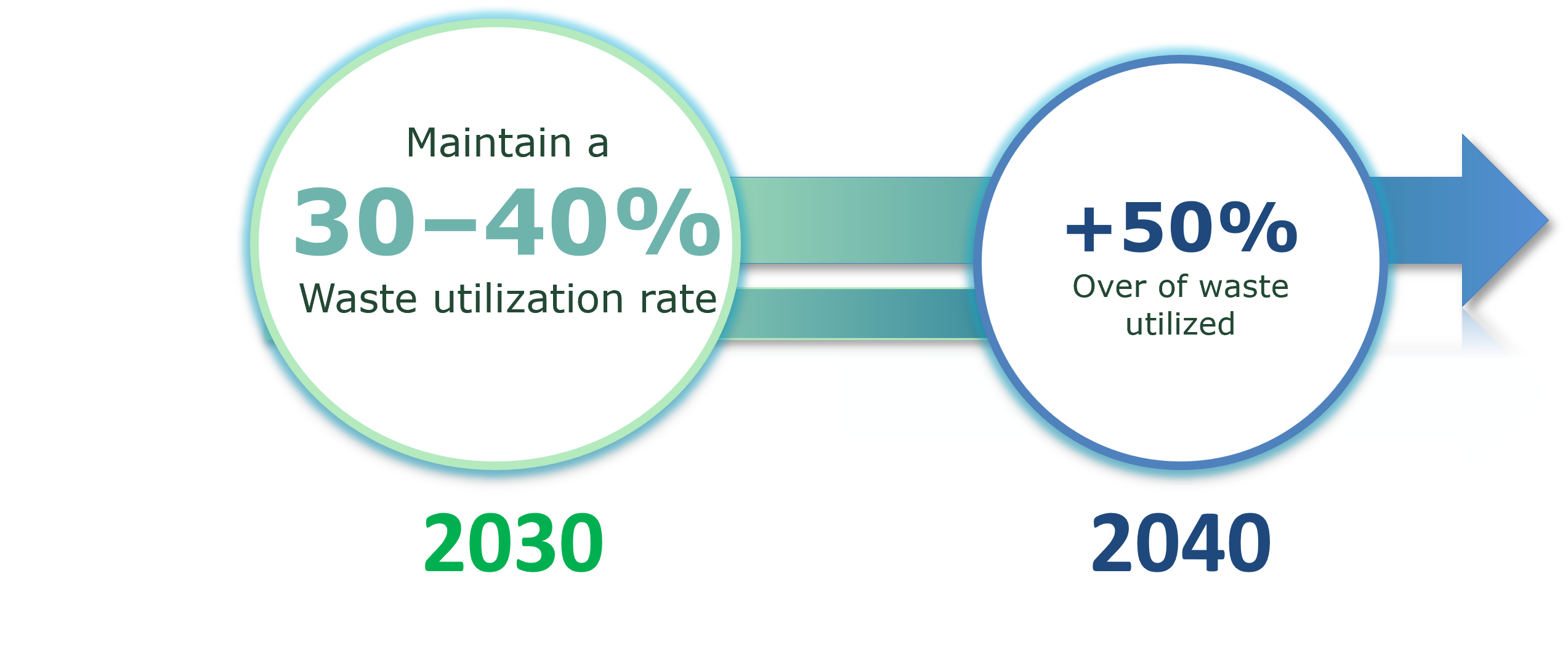 Web Content Viewer
Web Content Viewer
 buscador_2
buscador_2
 Web Content Viewer
Web Content Viewer
Our Goals
May 29, 2025
Short, medium and long-term goals

For 2024, the maximum limit for non-hazardous waste sent to final disposal was set at 282,815 Metric tons. By the end of 2024, the total volume for non-hazardous waste disposed was 207,679 Metric tons, meeting the target. Additionally, Ecopetrol planned to generate a maximum of 94,613 Metric tons of hazardous waste, and the actual generation in 2024 was 87,694 Metric tons, also complying with the target.
In line with the roadmap for materials and waste and the strategic lines of the Integrated Waste Management pillar, the following ambitions have been defined for 2030 and 2040:

Targets 2025-2027
The contributions from the Upstream (production) and Downstream (Refining) segments — toward achieving the company’s ambitions begin with the establishment of short-term targets for each asset and project, enabling gradual progress in reducing the volume of waste sent to final disposal.
2024 Performance Highlights – Waste recovery and reduction
Regarding to the goals set for 2024, the Company achieved the following results:
- Non-hazardous waste recovery:
Achieved 98% of the target, with 179,669 Metric ton recovered out of 183,197 Metric ton planned. - Hazardous waste recovery:
Achieved over 100% of the target, with 2,596 Metric ton recovered versus 1,397 Metric ton planned. - Oily sludge recovery:
Achieved over 100% of the target, with 10,424 Metric ton recovered compared to 3,988 Metric ton planned. - Hazardous waste reduction:
Achieved over 100% of the target, with 3,931 Metric ton reduced versus 594 Metric ton planned. - Oily sludge generation rate reduction:
Achieved over 100% of the target. Two Upstream business units planned to reduce sludge generation rates by 7% and 8%*, respectively, and achieved reductions of 65% and 78%.
*Based on the official 2018–2020 Hazardous waste (RESPEL in Spanish) baseline.
Building on the 2024 achievements, we continue to drive circular economy initiatives:
- Utilized 142,291 MT (50%) of construction and demolition waste for maintaining internal and external roads and building civil works.
- Transferred 27,101 MT of scrap metal to the steel industry for recovery, achieving a 99% recovery rate.
- Recovered 1,682 MT (94%) of organic waste through composting and silage, generating fertilizers and other byproducts for internal use and delivery to Stakeholders.